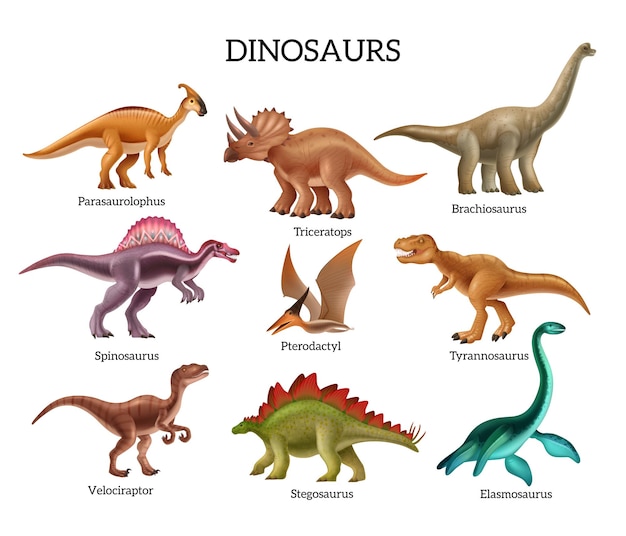

The Apatosaurus, also known as Brontosaurus, was one of the largest land animals to have ever existed.
Apatosaurus was a herbivorous dinosaur that lived during the Late Jurassic period.
Its name means deceptive lizard, but there’s nothing deceptive about its size!
Apatosaurus had a long neck and a small head in relation to its body size.
Its neck alone could reach lengths of up to 27 feet, allowing it to easily browse on tree leaves.
Apatosaurus had a whip-like tail that it could use to defend itself against predators.
Despite its enormous size, Apatosaurus is believed to have been a relatively peaceful dinosaur.
The Apatosaurus is closely related to other long-necked dinosaurs like Diplodocus and Brachiosaurus.
It is estimated that Apatosaurus weighed around 18-25 tons.
Fossil evidence suggests that Apatosaurus may have lived in herds.
Apatosaurus had hollow bones, similar to modern-day birds, which contributed to its overall lightweight structure.
The Apatosaurus had long, slender legs that were well adapted for supporting its massive body weight.
It is believed that Apatosaurus had a four-chambered heart, similar to mammals.
Apatosaurus likely had a limited range of motion in its neck due to the size and weight of its skull.
The Apatosaurus was capable of producing low-frequency vocalizations.
Paleontologists believe that Apatosaurus had a simple, spoon-shaped tooth structure, perfect for stripping leaves off branches.
Apatosaurus may have used its tail as a communication tool, creating loud sounds by whipping it against the ground.
Apatosaurus fossils have been found in North America, primarily in present-day Colorado, Utah, and Wyoming.
Apatosaurus was first discovered and named in 1877 by Othniel Charles Marsh.
The name Brontosaurus, often used interchangeably with Apatosaurus, was initially considered a separate species before it was merged with Apatosaurus.
The Apatosaurus had a relatively long lifespan, estimated to be around 70 years.
Apatosaurus had a snake-like tongue that could reach up to ten feet in length.
It is believed that Apatosaurus may have used its long neck to reach submerged plants in water bodies.
Apatosaurus had a huge appetite and would have needed to eat vast amounts of vegetation to sustain its size.
The skin of Apatosaurus may have been covered in small, pebble-like scales.
Despite being vegetarian, the Apatosaurus had sharp teeth that it used for biting and tearing foliage.
Apatosaurus fossils have been found in association with Allosaurus, suggesting potential predator-prey relationships.
Apatosaurus is often depicted with its neck held high, but it is now believed that it would have held its neck in a more horizontal position.
Apatosaurus likely traveled in a slow, ponderous manner, as its massive size would have limited its speed.
The name Apatosaurus was chosen due to a dispute between paleontologists about whether it should be named Brontosaurus or Apatosaurus.
Apatosaurus had a small brain size relative to its body size.
The Apatosaurus is an iconic dinosaur and has appeared in numerous books, movies, and TV shows.
Apatosaurus had peg-like teeth that were continually replaced throughout its lifetime.
The first complete Apatosaurus skeleton was discovered in Colorado, in the United States.
Apatosaurus belonged to a group of dinosaurs known as sauropods, characterized by their long necks and tails.
Apatosaurus may have laid eggs in large nests, similar to modern-day birds and reptiles.
Scientists have estimated that Apatosaurus may have needed to eat up to a ton of vegetation per day.
Apatosaurus had a relatively small skull compared to its overall body size.
The distinctive tail of Apatosaurus could reach lengths of up to 50 feet.
Apatosaurus had massive, pillar-like legs that helped support its immense weight.
The neck of Apatosaurus contained at least 15 vertebrae, each of which was relatively light and hollow.
Apatosaurus is believed to have lived in a swampy habitat with abundant vegetation.
Apatosaurus had a flexible neck that allowed it to move in different directions, although not as freely as depicted in some popular media.
Apatosaurus was a quadrupedal dinosaur, meaning it walked on all fours.
The discovery of Apatosaurus and other giant dinosaurs challenged the prevailing view of the time that dinosaurs were small, sluggish creatures.
Around the world, coffee enthusiasts enjoy Monin coffee concentrate since it is a multipurpose product. Conveniently combining…
The Importance of Choosing the Right Shower for Your Bathroom Renovating your bathroom can be…
Usain Bolt holds the record for the fastest 100-meter sprint in history.Bolt was named Sportsman…
Love is in the air... and it smells suspiciously like chocolate!Roses are red, violets are…
Life's a beach, take a picture and relax.Sun, sand, and salty kisses. That's what beach…
Hungary is home to the largest thermal water cave system in the world.The Rubik's Cube…